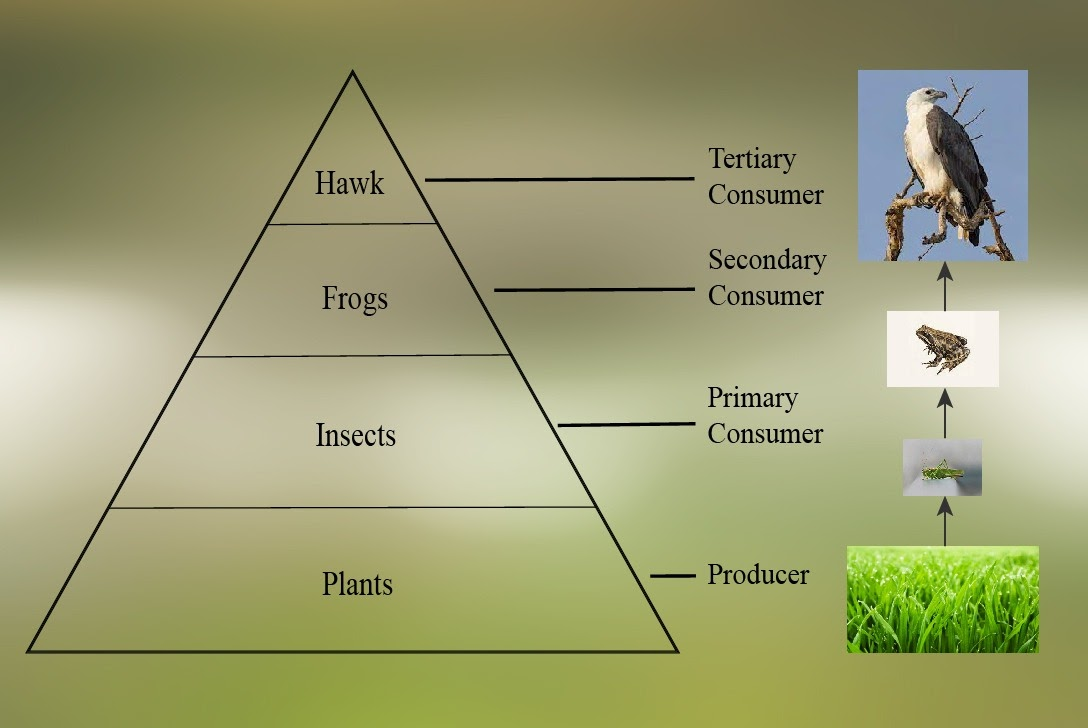
Carnivores which eat other carnivores are called
A. Primary consumers
B. Secondary consumers
C. Tertiary consumers
D. None of the above
Answer
407.1k+ views
Hint: An organism that only eats the flesh or meat of other animals is known as a carnivore. Such animals that are hunted by carnivores are called prey that are directly or indirectly dependent on plants for their nutrition.
Complete answer:
Carnivores that eat other carnivores are called tertiary consumers or consumers of the third order. Tertiary consumers or consumers of third-order include the secondary carnivores. Wolf can be taken as an example of an organism designating such a location in a food web as it dwells upon the secondary consumers (primary carnivores) like foxes (that eat rats and rabbits). Another classic example of tertiary consumers are killer whales or orcas that depend upon sea lions and seals (that depend upon fishes, squids and octopuses for nutritional needs).
Therefore, option C, Tertiary consumers is the correct answer.
Additional Information:
Primary consumers or consumers of the first order: This group of organisms include herbivores that directly depend upon the producers (plants). Herbivores of the terrestrial ecosystem include rabbits, the rats, mice, deer, goat, grasshoppers, grazing cattle etc. Similarly, herbivores of the aquatic ecosystem include crustaceans, molluscs etc.
Secondary consumers or consumers of the second order: This group of organisms include the primary carnivores, e.g., centipedes, fishes, frogs, snakes, predatory birds, wild cats, foxes etc. which feed upon the herbivores.
Tertiary consumers: These are present at the top levels of food chains. As the amount of energy is reduced at every trophic level of the food chain, these tertiary consumers need to intake a larger quantity of the food as compared to other lower trophic levels.

Note:
The carnivores are not only animals but they also include some plants and fungi. A few examples are venus flytrap, sundew, some moulds and mildew. These are important to keep a check on the population of herbivores and other animals.
Complete answer:
Carnivores that eat other carnivores are called tertiary consumers or consumers of the third order. Tertiary consumers or consumers of third-order include the secondary carnivores. Wolf can be taken as an example of an organism designating such a location in a food web as it dwells upon the secondary consumers (primary carnivores) like foxes (that eat rats and rabbits). Another classic example of tertiary consumers are killer whales or orcas that depend upon sea lions and seals (that depend upon fishes, squids and octopuses for nutritional needs).
Therefore, option C, Tertiary consumers is the correct answer.
Additional Information:
Primary consumers or consumers of the first order: This group of organisms include herbivores that directly depend upon the producers (plants). Herbivores of the terrestrial ecosystem include rabbits, the rats, mice, deer, goat, grasshoppers, grazing cattle etc. Similarly, herbivores of the aquatic ecosystem include crustaceans, molluscs etc.
Secondary consumers or consumers of the second order: This group of organisms include the primary carnivores, e.g., centipedes, fishes, frogs, snakes, predatory birds, wild cats, foxes etc. which feed upon the herbivores.
Tertiary consumers: These are present at the top levels of food chains. As the amount of energy is reduced at every trophic level of the food chain, these tertiary consumers need to intake a larger quantity of the food as compared to other lower trophic levels.

Note:
The carnivores are not only animals but they also include some plants and fungi. A few examples are venus flytrap, sundew, some moulds and mildew. These are important to keep a check on the population of herbivores and other animals.
Recently Updated Pages
How do you factor x2 + x 20 0 class 9 maths CBSE

How do you solve y6x and 2x+3y20 using substitutio class 9 maths CBSE

Chipko movement originated in Gopeshwar in A 1953 B class 9 biology CBSE

The adjacent sides in the parallelogram are supplementary class 9 maths CBSE

The compound used in plastic industry is A Vinyl acetate class 9 chemistry CBSE

How do you solve for y in 2left y dfrac12 right 4left class 9 maths CBSE

Trending doubts
Write the difference between soap and detergent class 10 chemistry CBSE

When was Shivaji born A 1632 B 1627 C 1678 D 1634 class 10 social science CBSE

a Why did Mendel choose pea plants for his experiments class 10 biology CBSE

State and explain Ohms law class 10 physics CBSE

The Equation xxx + 2 is Satisfied when x is Equal to Class 10 Maths

Differentiate between Food chain and Food web class 10 biology CBSE




